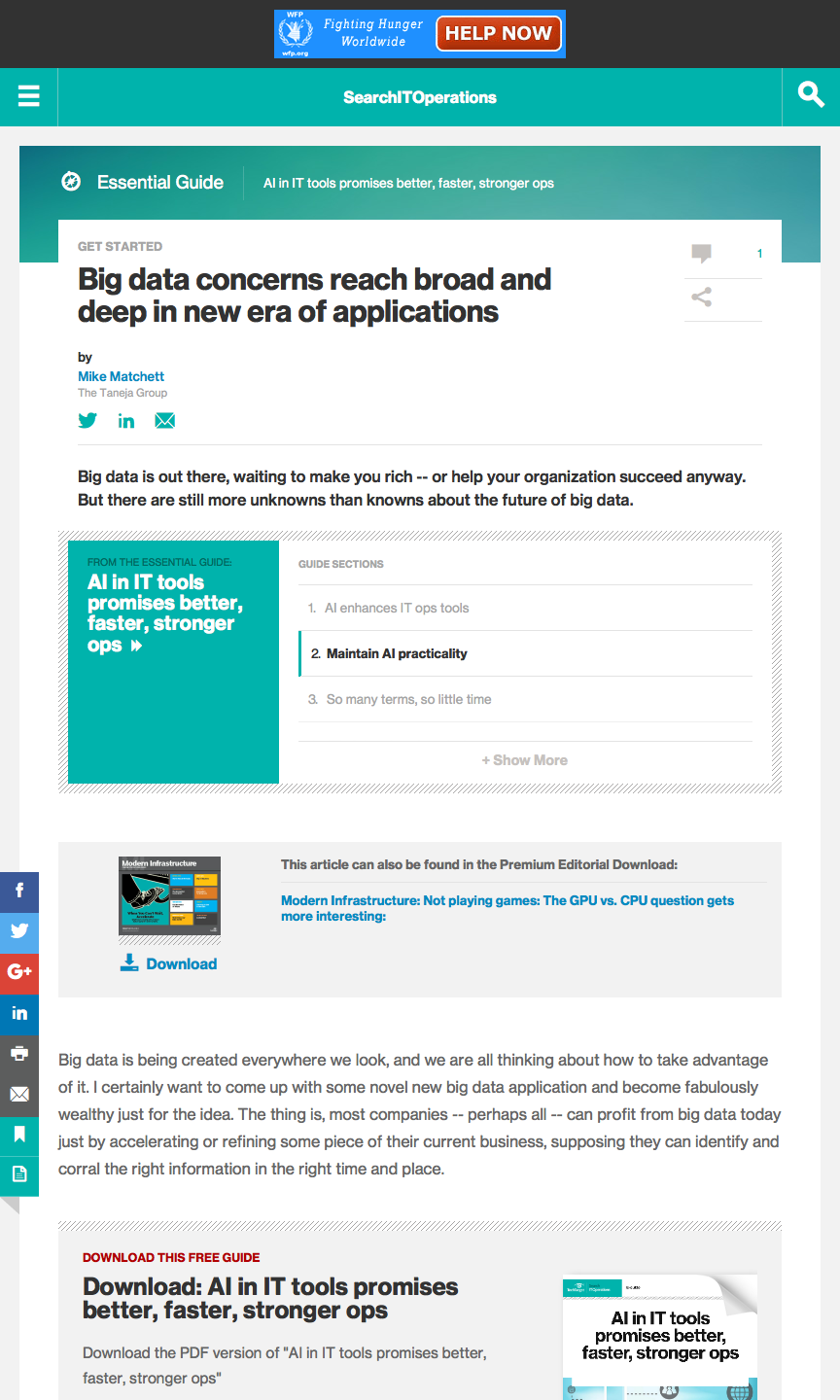Big data concerns reach broad and deep in new era of applications

An IT industry analyst article published by SearchITOperations.
 Big data is out there, waiting to make you rich — or help your organization succeed anyway. But there are still more unknowns than knowns about the future of big data.
Big data is out there, waiting to make you rich — or help your organization succeed anyway. But there are still more unknowns than knowns about the future of big data.
Mike Matchett
Big data is being created everywhere we look, and we are all thinking about how to take advantage of it. I certainly want to come up with some novel new big data application and become fabulously wealthy just for the idea. The thing is, most companies — perhaps all — can profit from big data today just by accelerating or refining some piece of their current business, supposing they can identify and corral the right information in the right time and place.
There is no need to find a new earth-shattering application to get started. I believe a significant big data payback is right in front of any marketing, sales, production or customer-engagement team. One simply needs to find a way to unlock the buried big data treasure. And, of course, that’s where big data concerns from practical to theoretical bubble to the surface.
A big sticking point has been finding the data science expertise, especially experts who could build optimized machine learning models tailored for your exact business needs. But we are seeing some interesting efforts recently to automate and, in some ways, commoditize big data handling and complicated machine learning. These big data automation technologies enable the regular Java Joe or Josie programmer to effectively drop big data analytics into existing, day-to-day operational-focused business applications.
Not only does this have the democratizing effect of unlocking big data value for non-data scientists, but it also highlights the trend toward a new application style. In the next three to five years, we will see most business applications that we’ve long categorized as transactional converge with what we’ve implemented separately as analytical applications. Put simply, with big data power, “business intelligence” is becoming fast enough and automated enough to deliver inside the operational business process in active business timeframes.
As these data processing worlds collide, they will reveal big data concerns for IT staff, and for those making decisions on IT infrastructure and data centers. Storage, databases and even networks will all need to adapt. Along with the rise of the internet of things (IoT), hybrid cloud architectures, persistent memory and containers, 2017 is going to be a pivotal year for challenging long-held assumptions and changing IT directions.
Out-of-reach data
While I will undoubtedly focus a lot of time and energy as an industry analyst on these fast-evolving topics in the near term, there is a longer-term big data concern: Some companies might not be able to take advantage of this democratization of data simply because they can’t get access to the data they need.
We need to think about how we can ensure [big data is] reliable, how we can maintain and ensure privacy — and regulatory compliance — how we can ensure we only implement ethical and moral big data algorithms and so on.
We’ve heard warnings about how hard it is to manage big data as important data. We need to think about how we can ensure it’s reliable, how we can maintain and ensure privacy — and regulatory compliance — how we can ensure we only implement ethical and moral big data algorithms and so on. But before all that, you first need access to the data — assuming it exists or can be created — that is valuable to your company. I call this the data paucity problem — there’s too little big data in use.
As an example, I don’t believe every IoT device manufacturer will end up getting unfettered access to the data streams generated by their own things, much less to the ecosystem of data surrounding their things in the field. I think it is inevitable that some will be getting locked out of their own data flowback…(read the complete as-published article there)
